In the early stages of this 2023/24 season, Rangers find themselves amidst another rebuilding project. It is something that the Glasgow outfit has become accustomed to since their exile to Scotland’s fourth tier in 2012 following financial circumstances off the pitch.
Rangers did claw themselves back to the top of the Scottish football pyramid and were crowned champions of the Scottish Premiership in 2021, following an undefeated campaign. Despite then-manager, Steven Gerrard opting to take the Aston Villa hot seat, Rangers progressed to the Europa League final the following season, under the guidance of Giovanni van Bronckhorst.
However, in November 2022, van Bronckhorst was dismissed, with Rangers trailing their Parkhead rivals by nine points in the league. His replacement, Michael Beale, who had assisted in Gerrard’s tenure at Ibrox, was swiftly brought in. However, the Gers are currently looking for a new manager following the announcement of Beale’s sacking, who lasted less than a year in the post.
In this tactical analysis, we will assess Rangers’ poor start to the season and where it has gone wrong for Beale at Ibrox. We will also provide an analysis of the tactics employed in this campaign to assess how Rangers can improve in order to mount a serious title challenge and get their season back on track.
Poor start to the season
Football can be a fickle business, and Beale will be acutely aware of this. Less than 12 months ago, Beale was regarded as one of English football’s up-and-coming, exciting young managers as his QPR side sat seventh in the EFL Championship following a bright start to the season. His impressive start to life in West London caught the attention of his former employers, and Beale returned to Ibrox, this time in the managerial seat.
Rumours had circulated that Beale was the brains behind Gerrard’s reign, but such assertions have now been dismissed, with many believing he was never the right man to replace van Bronckhorst. Any Rangers manager is likely to be judged on performances in Europe as well as against bitter rivals Celtic. Beale did not pass the test in either this campaign, crashing out of the Champions League to PSV – whom Rangers had beaten at the same stage last season. His record overall against Celtic was poor. He lost four of six matches against them, only winning one.
Although Rangers improved last season under Beale, performances have not met standards this season, losing three times in the league and finding themselves seven points adrift of Celtic.

The table shows that Beale had a comparable defensive record to van Bronckhorst last season and managed to improve the respective scoring and points-per-match rates. However, while Beale has overseen a stronger defence this season, their attacking credentials have declined.
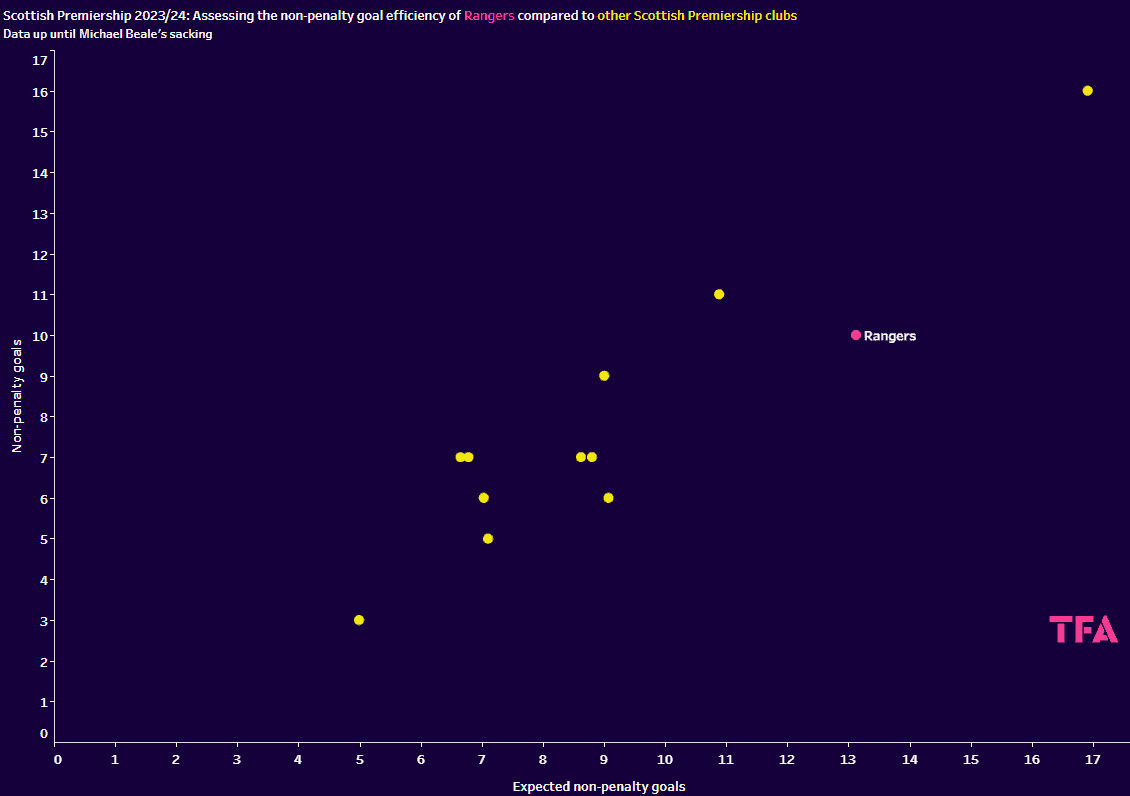
The scatter plot shows that Rangers scored 10 non-penalty goals in the league under Beale’s guidance this season despite having an expected non-penalty goals tally of 13.12 during the same period. Therefore, the Glasgow side has underperformed in front of goal this season.
Such a lack of efficiency in front of goal does not vindicate the decision to let Glen Kamara leave in the summer transfer window to go to Leeds, as the midfielder was the most prolific Rangers player last season, converting 33% of his shots.
However, the lack of goals has undoubtedly not been helped by the tactical tweaks that Beale had imposed this season.
More tactical decisiveness is needed
Beale’s philosophy is for his team to “own the pitch” and to adopt a flexible and unpredictable approach. However, such unpredictability has been to the detriment of his players’ performances this season, most notably Todd Cantwell.
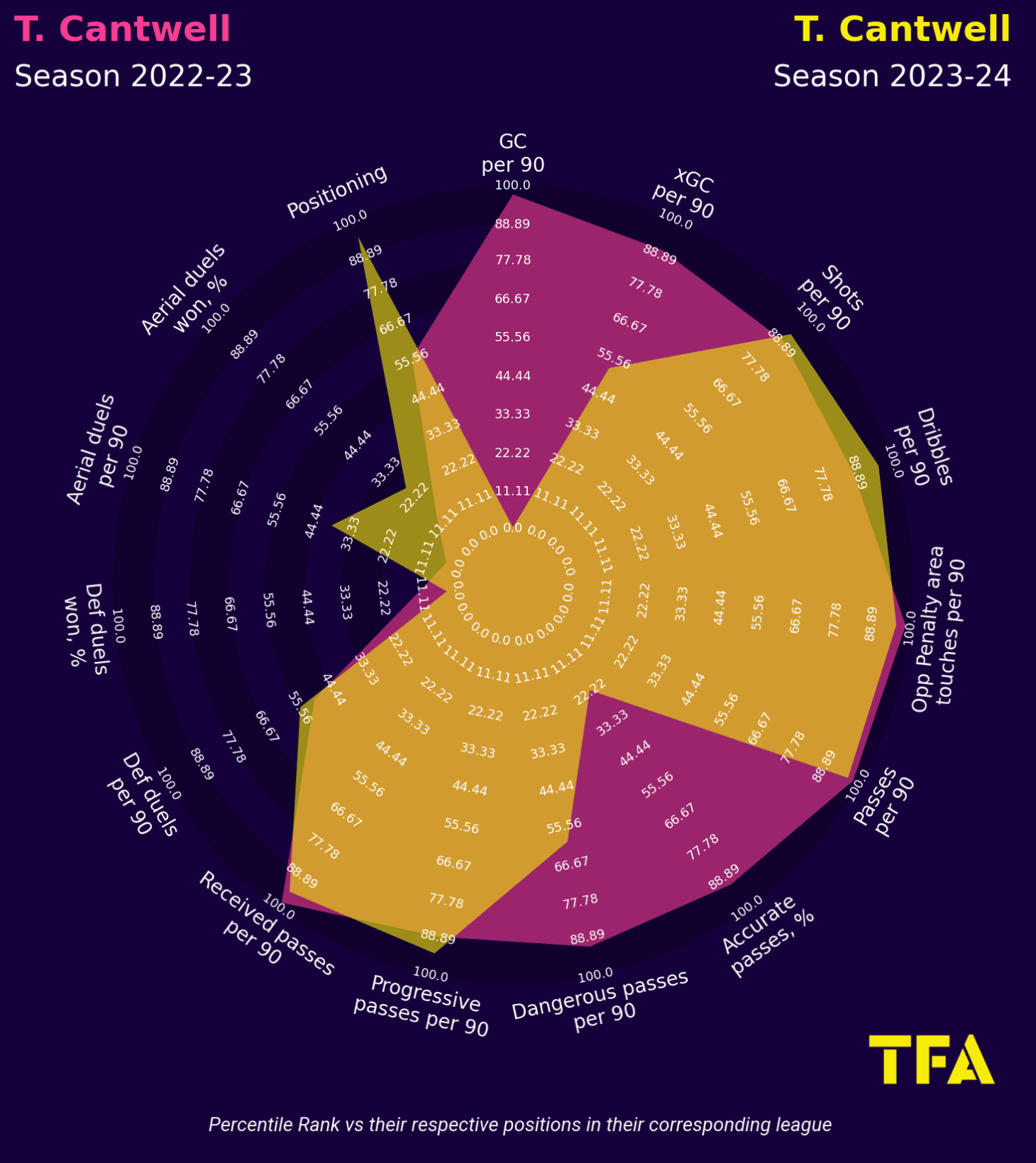
Cantwell flourished at Ibrox following his arrival from Norwich City in January 2023, mainly playing in a no.10 role. Beale opted, however, to utilise Cantwell more on the right side of midfield this season. The radar chart shows that the positional change has markedly reduced Cantwell’s attacking play this season, ranking much lower for goal contributions and dangerous passes per 90 than last season.
Furthermore, Cantwell’s much lower ranking for percentage of accurate passes epitomises a flaw in Rangers play this season: a disconnect between attack and midfield.
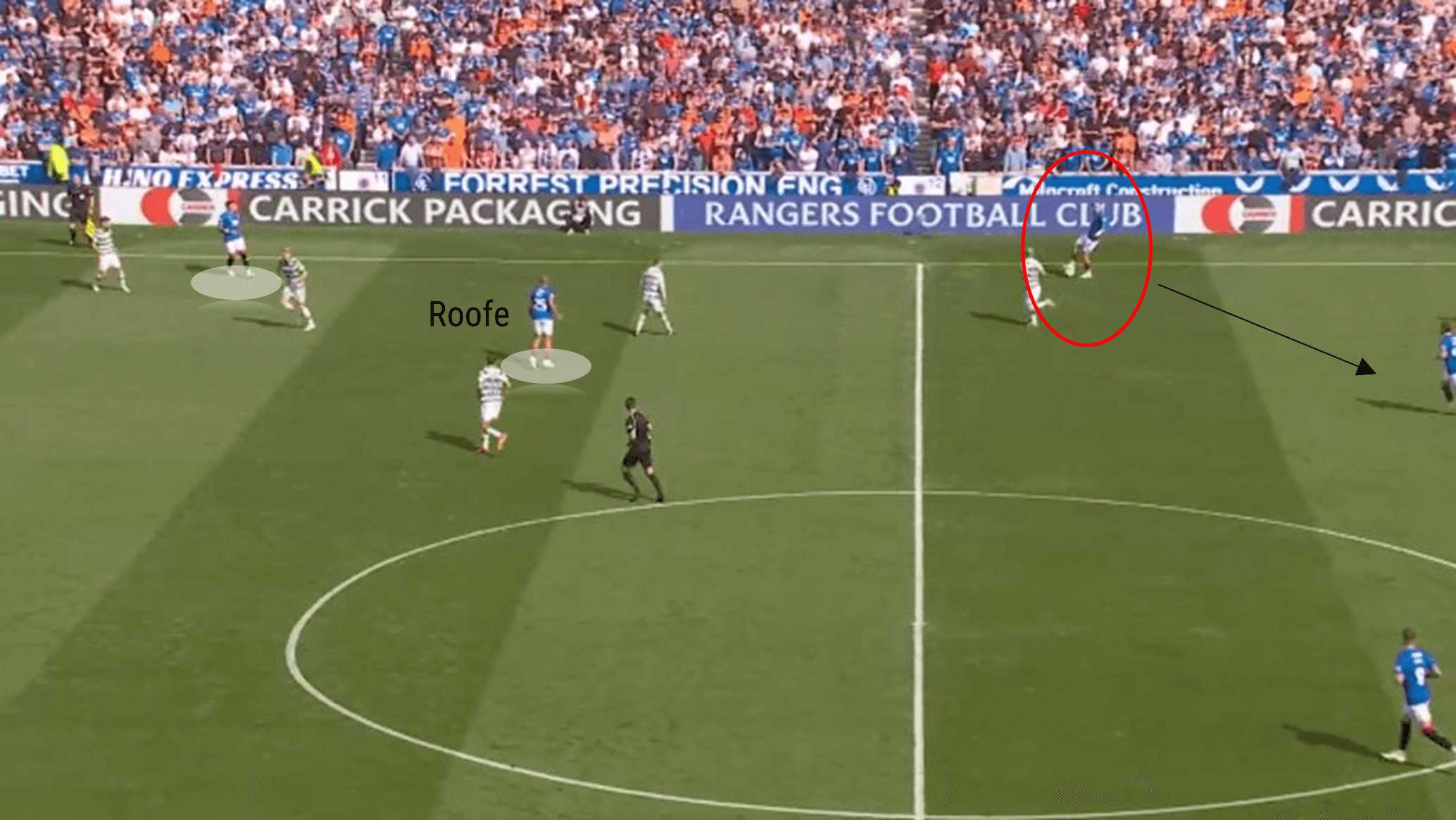
In the above match still, Rangers are in possession of the ball on the right-hand side. However, a lack of movement by Kemar Roofe ensures the Rangers forward remains surrounded by the opposition. Consequently, the ball is not progressed forward and is played behind, across the defence.

Rangers eventually work the ball out to the left, and Dujon Sterling cuts inside, but instead of playing a through pass for Roofe to run onto, Sterling plays it directly to his teammate’s feet. Roofe subsequently loses control, and Celtic regain possession.
Under Beale, Rangers played possession-based football, with the first phase of play coming out from the back. Rangers averaged 65.1% possession in the league, bettered only by Celtic. Moreover, Rangers had a PPDA value of 9.3, bettered only by Hearts. Rangers would often play a 4-3-3 out of possession with the central midfielders pivotal to pressing phases of play.
However, the evident lack of cohesion between the midfield and attack this season further thwarted Beale’s preference to “own the pitch” as the press led to fewer regains overall this season in more advanced positions.
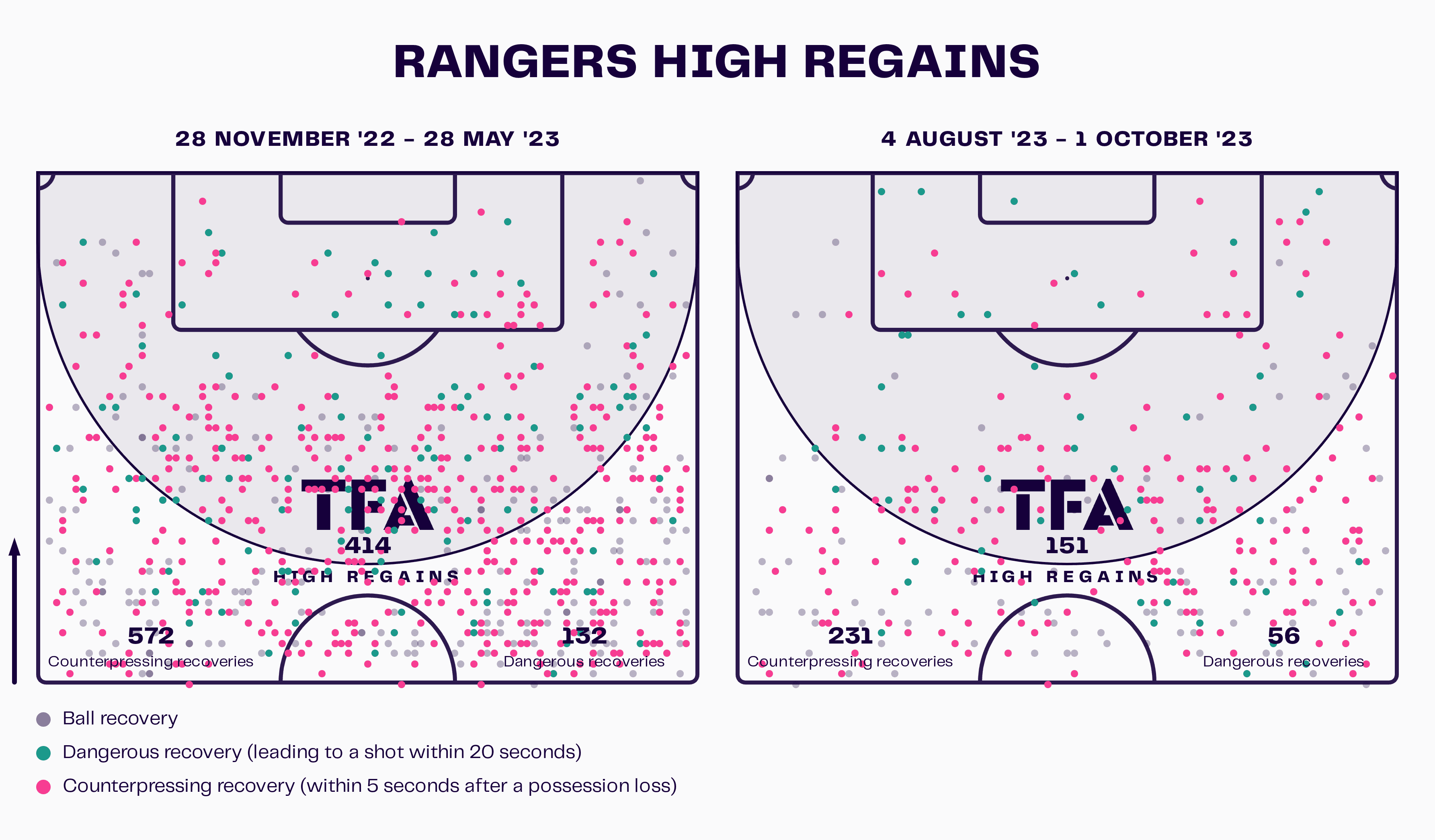
The graphic testifies that in all competitions under Beale last season, Rangers had 14.28 high regains per 90. This is larger than the 10.79 high regains per 90 this season, also under Beale’s guidance. It is, therefore, shown that despite Rangers’ pressing outperforming most league rivals this season under Beale, the overall press in all competitions has been less effective this season.
This was evident in the Scottish League Cup match against Livingston.
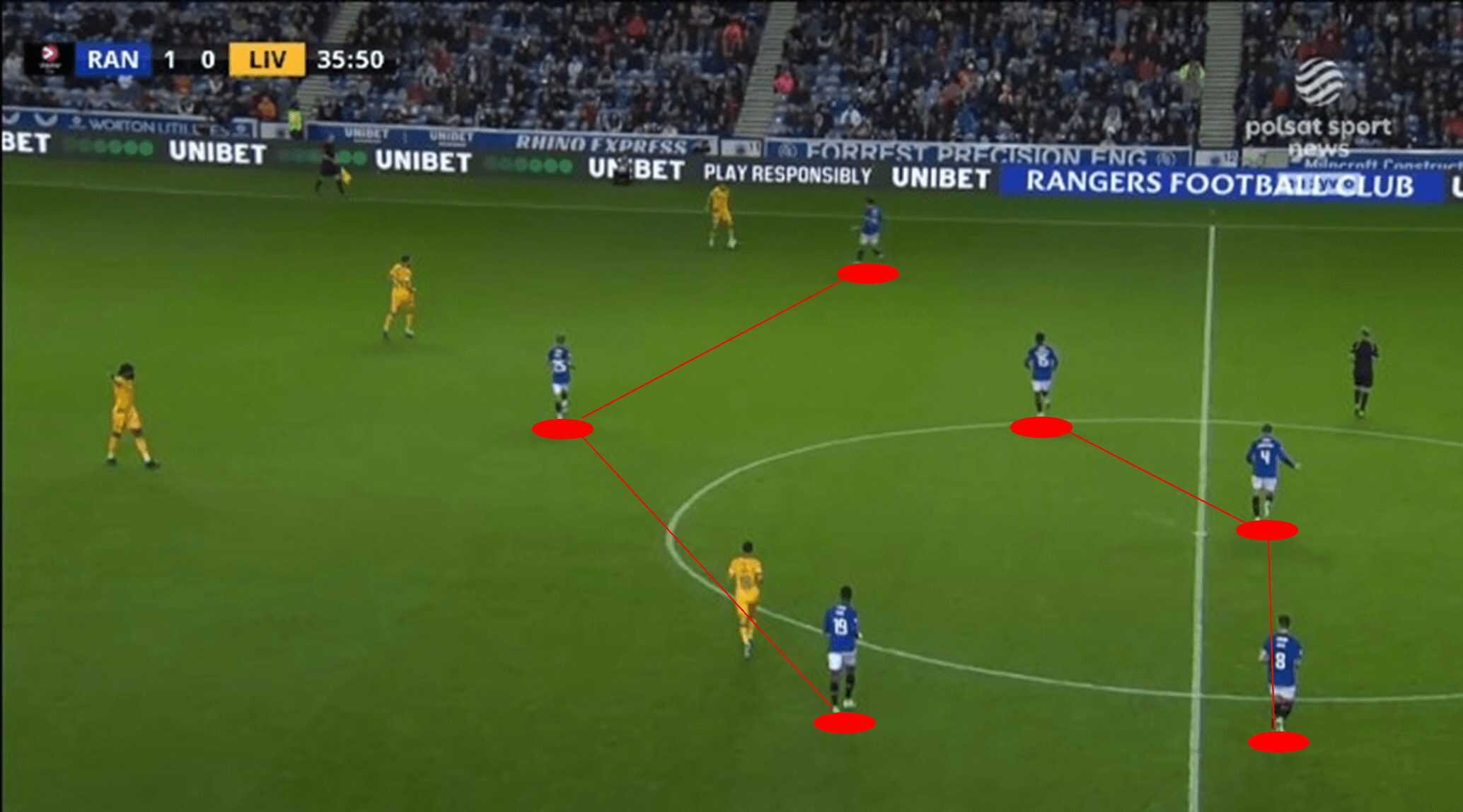
The image shows Rangers set up in a 4-3-3 without the ball with the three midfielders compact centrally.
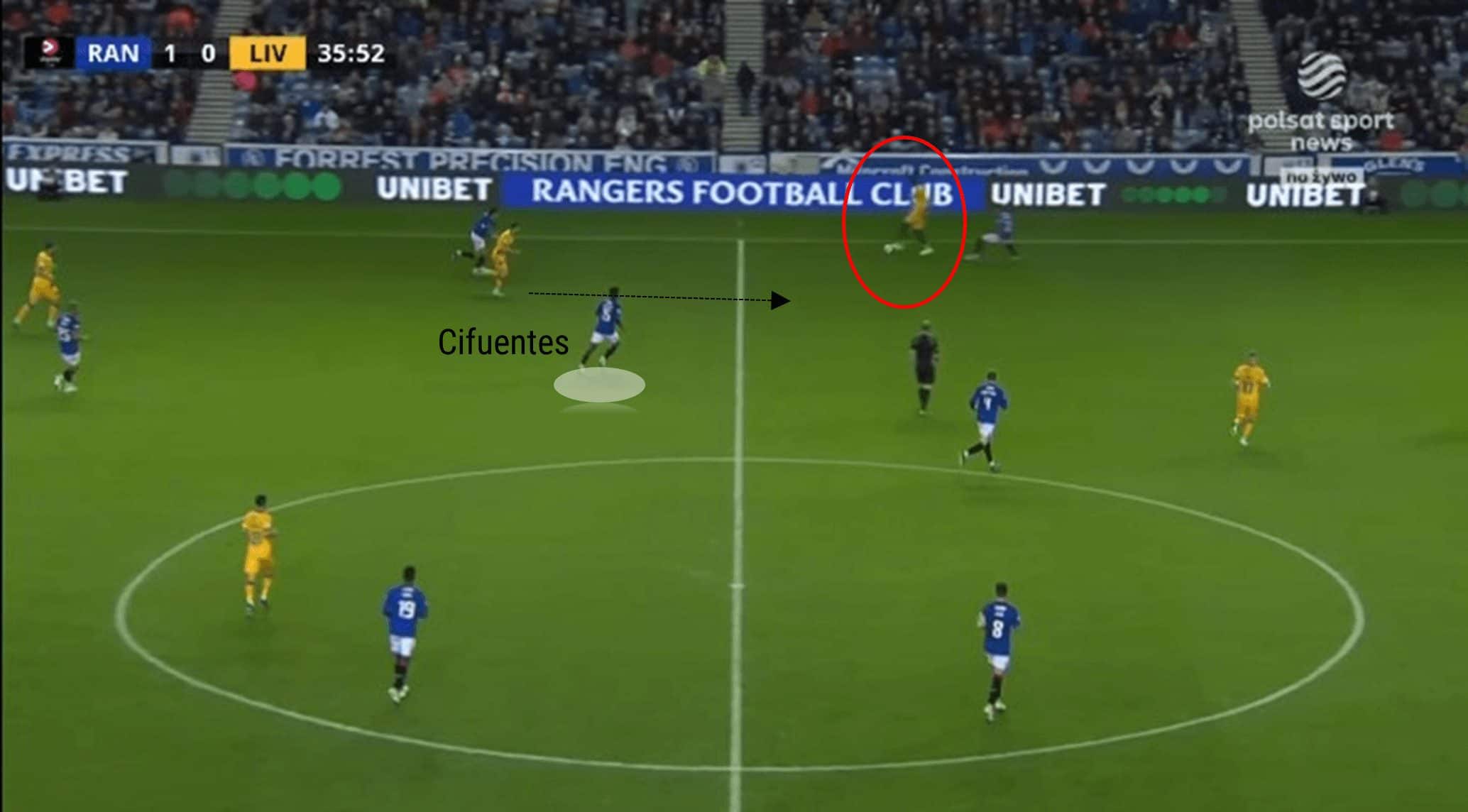
Livingston played the ball out wide, and the left-back advanced to play a one-two combination. The Livingston left-back is able to exploit the space left by José Cifuentes.
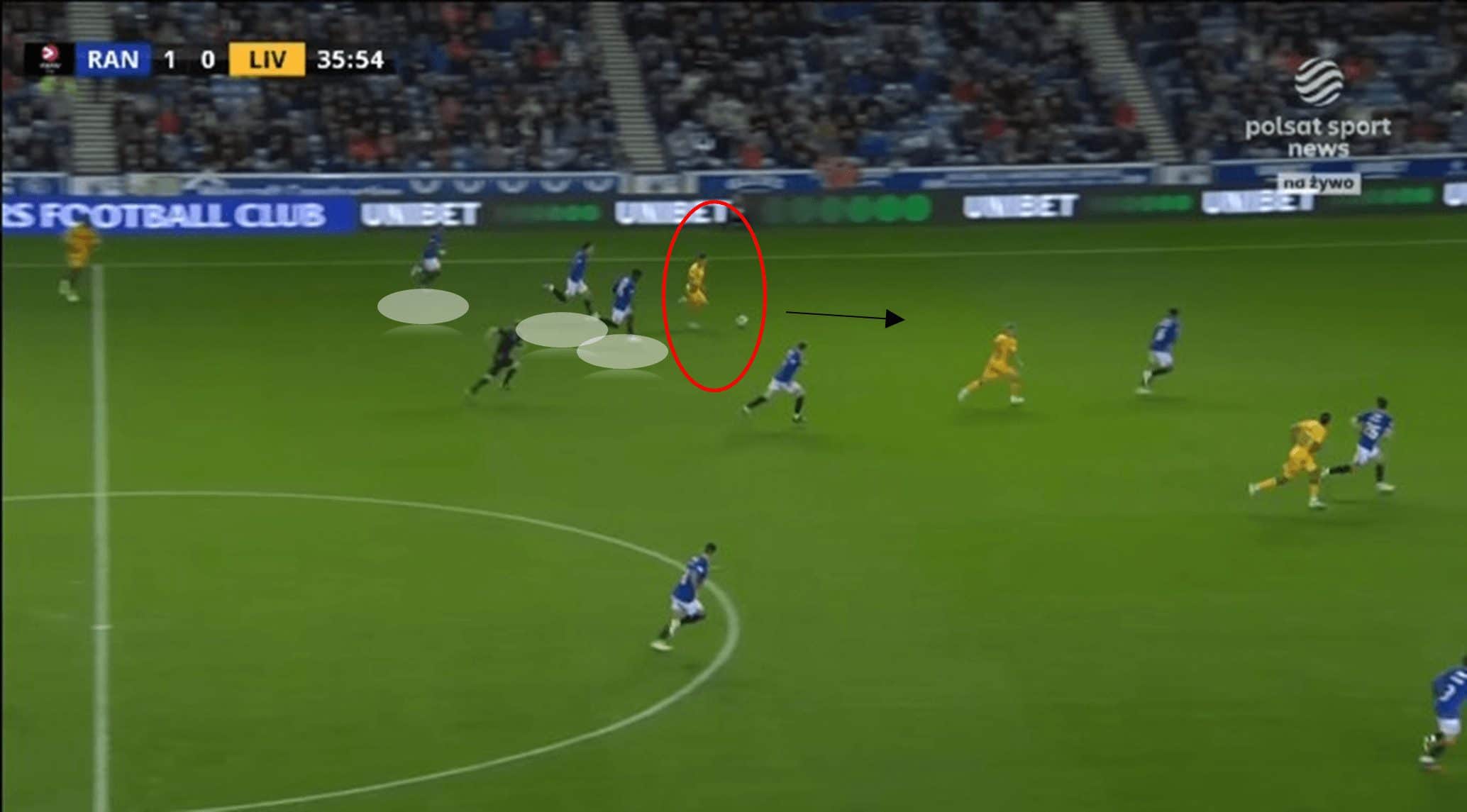
The quick exchange by Livingston left three Rangers players chasing back. The opposition eventually got a shot away, but the effort was off-target.
The poor attack at Ibrox is made more disappointing by the fact new arrivals were brought in to bolster this area of the squad this season.
Time to get the best out of the new recruits
Many Rangers fans will be puzzled as to why the majority of the new players did not feature much for Beale this season.

The bar chart shows that of the nine new players, only goalkeeper Jack Butland played in all seven league games under Beale this season. Butland has performed well, operating in a defensive lineup that boasts one of the best defences in the division this campaign.
Beale historically said that “formations are nowhere near as important as the players who are in them”. The fact that such little game time was given to the new arrivals in the league this season suggests Beale was unsure of how best to incorporate them into the team.
The most expensive buy, Danilo, featured on the left side of attack at times under Beale this campaign, even though he operated much more effectively as a number nine for Feyenoord.
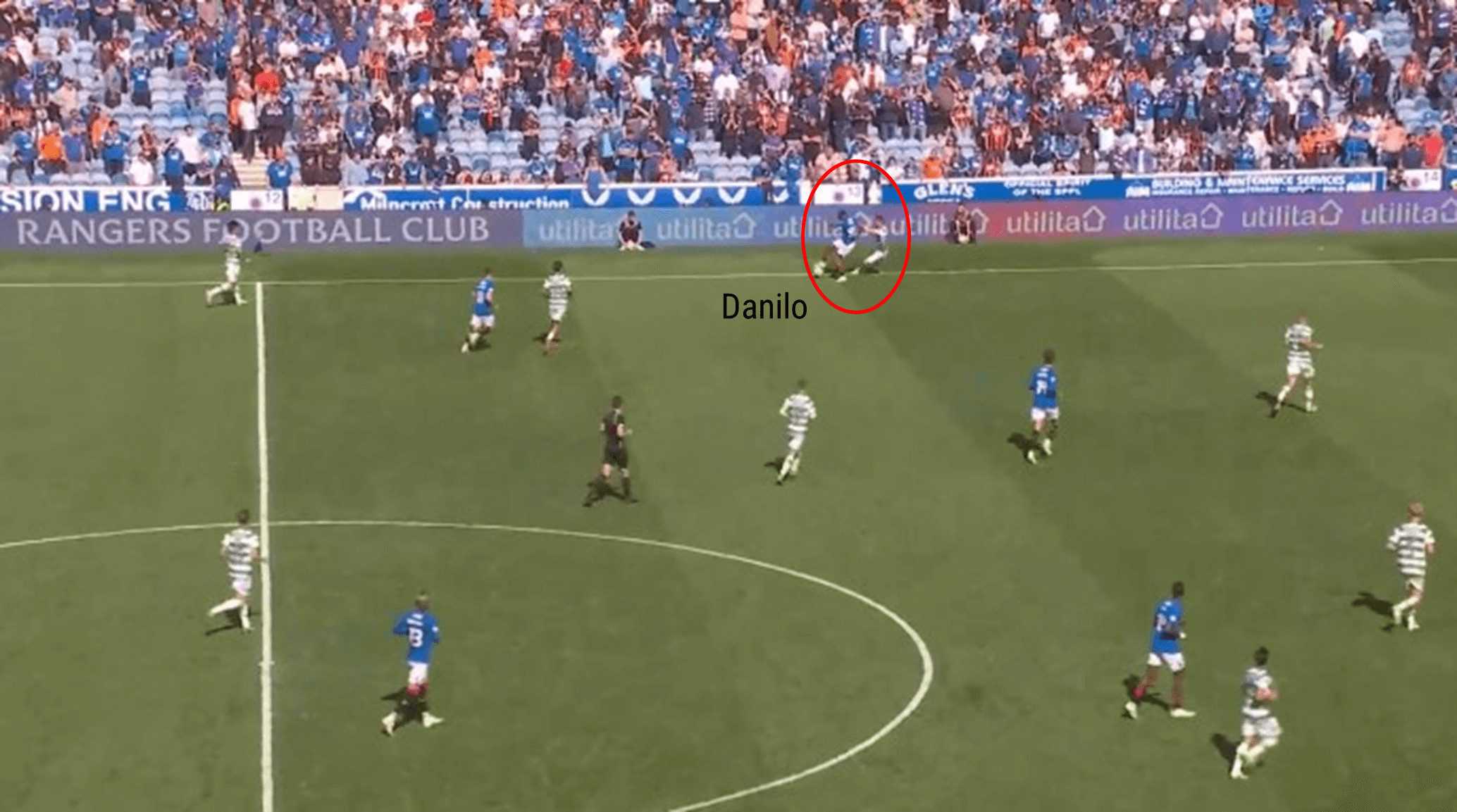
In the above image, Danilo receives the ball on the left-hand side under pressure from the Celtic defender. Danilo is unable to keep possession of the ball and is tackled.
The Brazilian forward strengths do not lie on the wing, testified by the fact that he has yet to record a single cross into the penalty area this season. He is much more accustomed to playing centrally, allowing himself to get on the end of crosses such as his headed goal against St. Johnstone. Furthermore, he can link up well with his team when operating in a more central position.
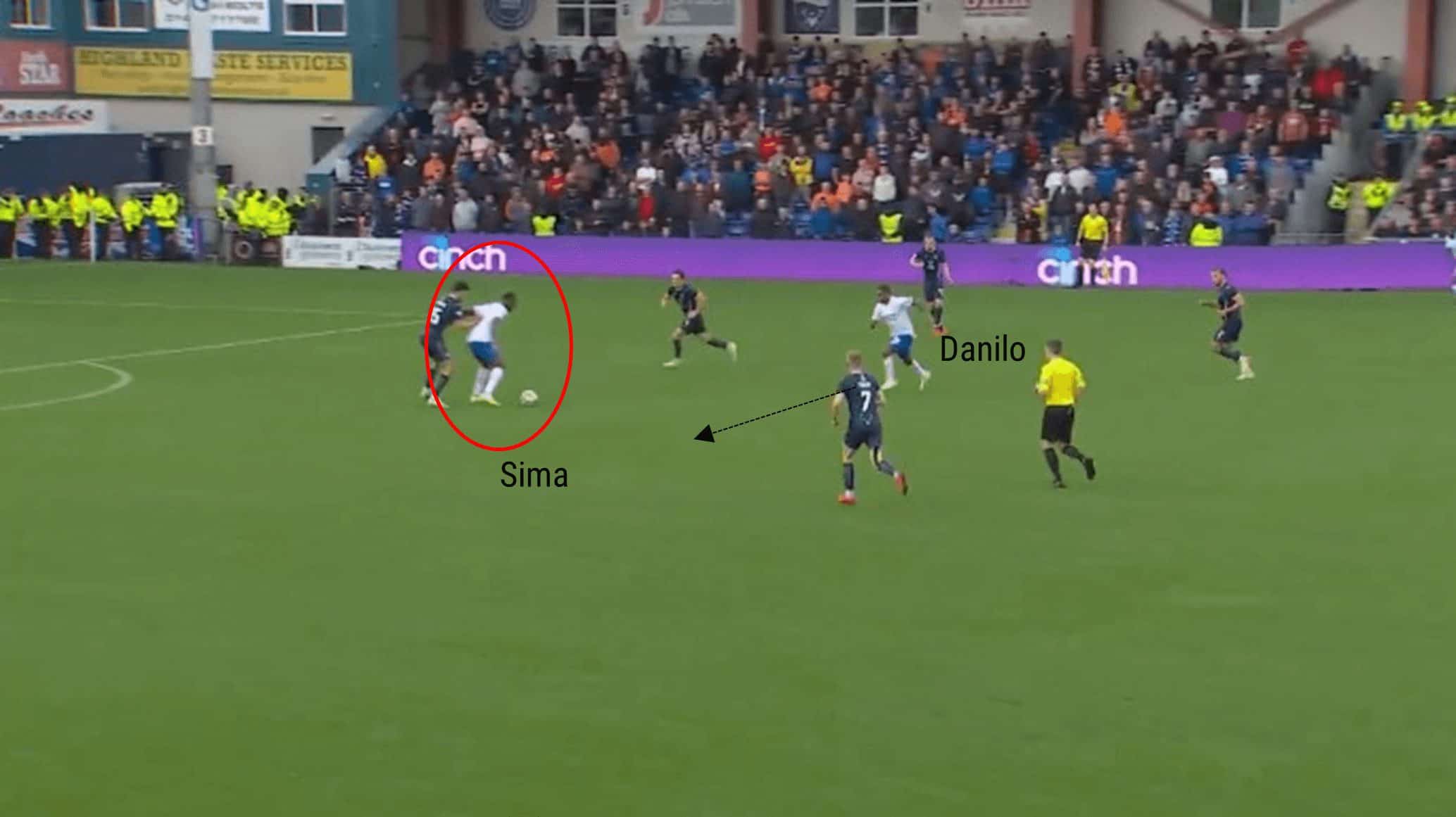
Abdallah Sima is in possession of the ball with his back to goal, drawing the opposing defender to follow. Danilo is advancing towards space, ready to link up with Sima.
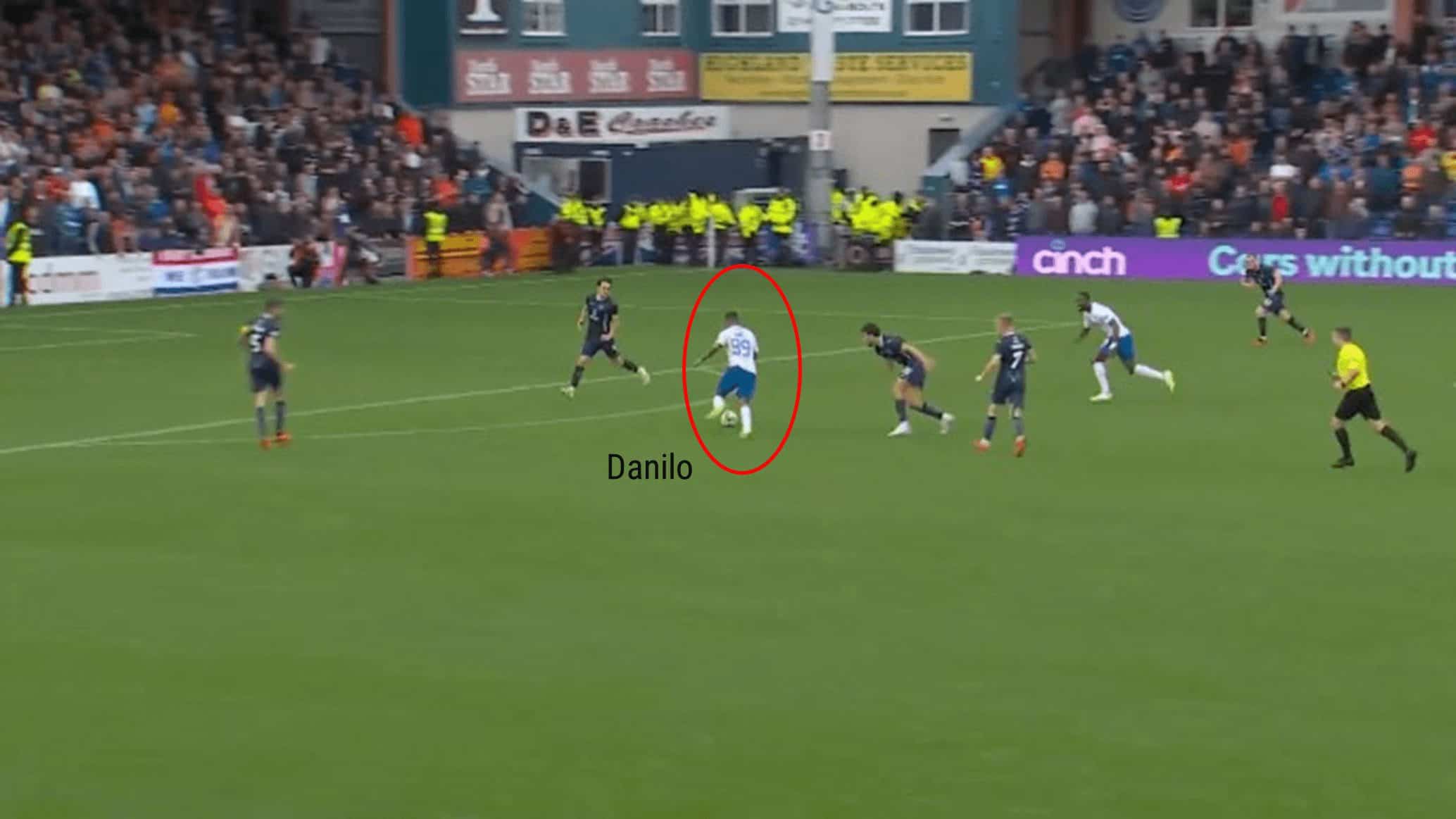
Upon linking up with Sima, Danilo is able to get a shot away. Although he doesn’t find the back of the net on this occasion, the match images demonstrate his attacking credentials in a more advanced central position.
The overhaul of the squad has identified a lack of width for Rangers, particularly with the departure of Ryan Kent. One potential solution could be to utilise a 4-4-2 diamond, in which Cantwell could occupy the number 10 role, which he had previously done to good effect. This formation would also allow Danilo to play more centrally upfront; forward players such as Roofe could operate the channels in the more attacking phases of play.
Moreover, the diamond formation would allow the full-backs such as James Tavernier to provide attacking width.

Tavernier is positioned much more advanced in this image to provide a cross into the box.
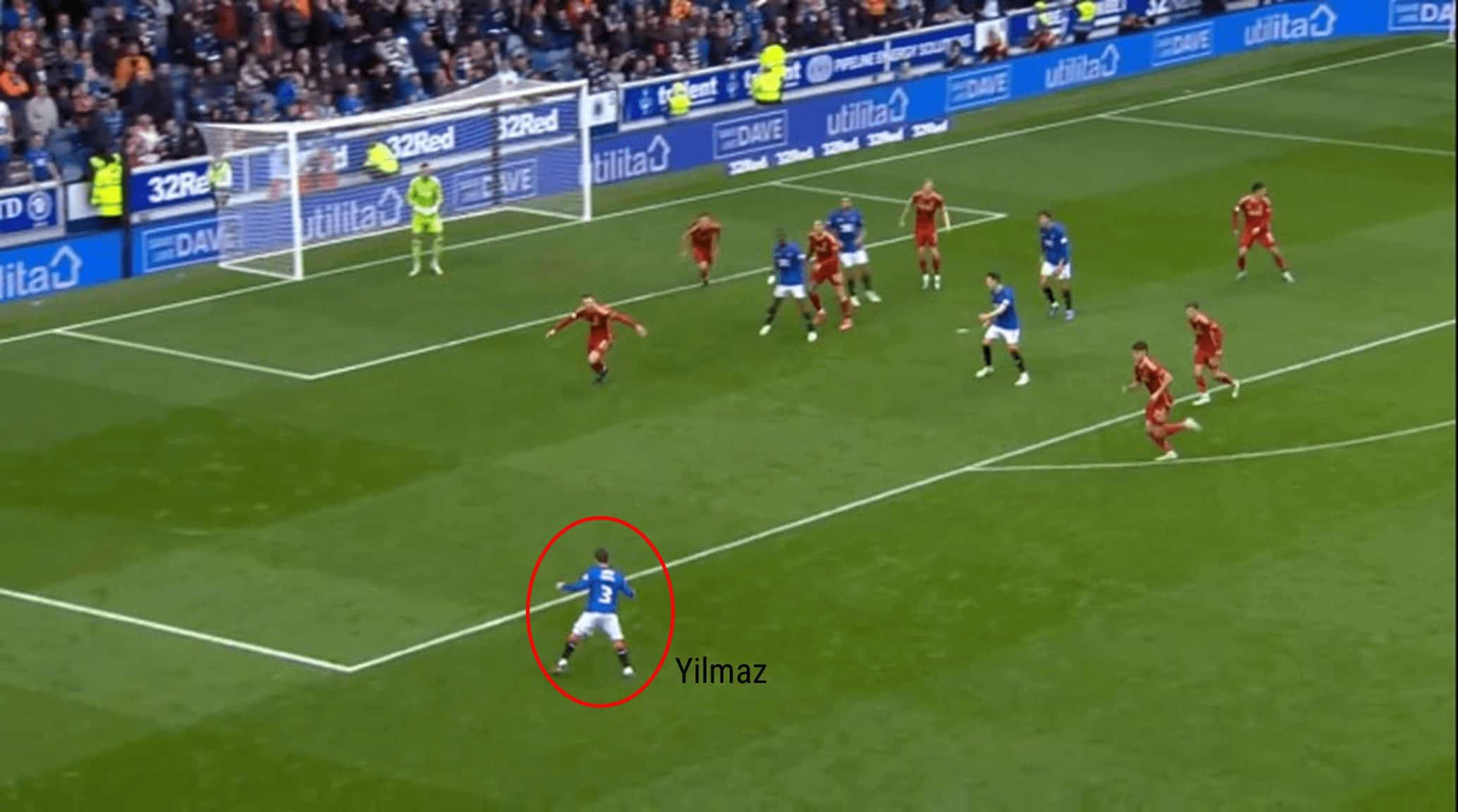
Although Tavernier’s cross is cleared, the ball eventually finds its way to the Rangers left-back, Ridvan Yilmaz, who, like Tavernier, is advanced to then provide another ball into the area for the Glasgow side. It is demonstrated that the Rangers’ full-backs are accustomed to advanced positioning to assist in attacking phases of play.
The 4-4-2 diamond would require the athleticism of the full-backs and the ability to invert toward a no.8 role. Tavernier and Yilmaz have been known to invert in more advanced positions this season, and both full-backs have shown accelerating capabilities, suggesting they could match the physical capabilities that the formation would require. Another option at left-back, Borna Barisic, has also shown such traits.
Regardless, it is evident that Rangers have an unbalanced squad at present, especially in terms of attacking options. If Rangers are to move forward tactically, they must find a system that will work for the players at their disposal.
Conclusion
This tactical analysis shows that Rangers have been misfiring this season, scoring fewer non-penalty goals than expected. The link-up play in midfield and attack has been less cohesive, resulting in a less effective press at times. It has been shown that the personnel brought in during the recent summer transfer window has not yet gelled, and consequently, the tactics imposed by Beale have led to a disjointed side with players not playing in their preferred positions.
However, the season is not lost at Ibrox. Rangers still find themselves in the Scottish League Cup, and with Celtic having already been eliminated, there is a genuine chance of silverware to be had. Moreover, Rangers are still in the Europa League, and with head-to-head battles with their rivals Celtic still to come, the opportunity to displace Brendan Rodger’s side at the head of the league table is possible. The critical next task is to find a suitable replacement for Beale, who can get the best out of the current crop at Ibrox.






Comments